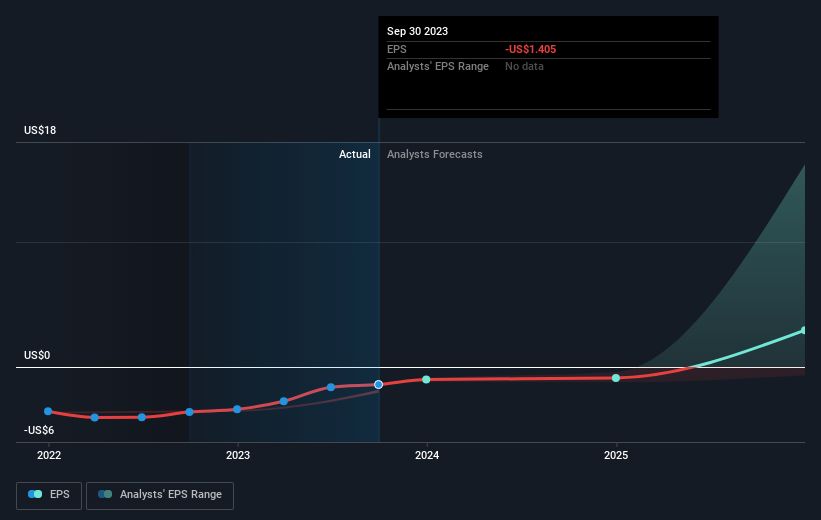When Will G1 Therapeutics, Inc. (NASDAQ:GTHX) Turn A Profit?
With the business potentially at an important milestone, we thought we'd take a closer look at G1 Therapeutics, Inc.'s (NASDAQ:GTHX) future prospects. G1 Therapeutics, Inc., a commercial-stage biopharmaceutical company, engages in the discovery, development, and commercialization of small molecule therapeutics for the treatment of patients with cancer. The US$69m market-cap company’s loss lessened since it announced a US$148m loss in the full financial year, compared to the latest trailing-twelve-month loss of US$71m, as it approaches breakeven. Many investors are wondering about the rate at which G1 Therapeutics will turn a profit, with the big question being “when will the company breakeven?” Below we will provide a high-level summary of the industry analysts’ expectations for the company.
See our latest analysis for G1 Therapeutics
Consensus from 6 of the American Biotechs analysts is that G1 Therapeutics is on the verge of breakeven. They expect the company to post a final loss in 2024, before turning a profit of US$134m in 2025. Therefore, the company is expected to breakeven roughly 2 years from now. What rate will the company have to grow year-on-year in order to breakeven on this date? Using a line of best fit, we calculated an average annual growth rate of 49%, which is extremely buoyant. Should the business grow at a slower rate, it will become profitable at a later date than expected.
Underlying developments driving G1 Therapeutics' growth isn’t the focus of this broad overview, but, take into account that typically a biotech has lumpy cash flows which are contingent on the product type and stage of development the company is in. This means, large upcoming growth rates are not abnormal as the company is beginning to reap the benefits of earlier investments.
Before we wrap up, there’s one issue worth mentioning. G1 Therapeutics currently has a debt-to-equity ratio of 119%. Typically, debt shouldn’t exceed 40% of your equity, and the company has considerably exceeded this. Note that a higher debt obligation increases the risk in investing in the loss-making company.
Next Steps:
There are too many aspects of G1 Therapeutics to cover in one brief article, but the key fundamentals for the company can all be found in one place – G1 Therapeutics' company page on Simply Wall St. We've also put together a list of key factors you should further research:
Valuation: What is G1 Therapeutics worth today? Has the future growth potential already been factored into the price? The intrinsic value infographic in our free research report helps visualize whether G1 Therapeutics is currently mispriced by the market.
Management Team: An experienced management team on the helm increases our confidence in the business – take a look at who sits on G1 Therapeutics’s board and the CEO’s background.
Other High-Performing Stocks: Are there other stocks that provide better prospects with proven track records? Explore our free list of these great stocks here.
Have feedback on this article? Concerned about the content? Get in touch with us directly. Alternatively, email editorial-team (at) simplywallst.com.
This article by Simply Wall St is general in nature. We provide commentary based on historical data and analyst forecasts only using an unbiased methodology and our articles are not intended to be financial advice. It does not constitute a recommendation to buy or sell any stock, and does not take account of your objectives, or your financial situation. We aim to bring you long-term focused analysis driven by fundamental data. Note that our analysis may not factor in the latest price-sensitive company announcements or qualitative material. Simply Wall St has no position in any stocks mentioned.

